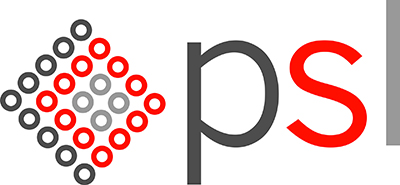By 2030, that market should reach a global value of $41.5 billion. This figure encompasses a range of methods, but solid-liquid filtration is one of the foremost.
Solid-liquid filtration as a paradigm comprises many distinct techniques. These include depth filtration, centrifugation, rotary evaporation, and more. Every part of the solid-liquid filtration system plays a key role in ensuring product safety, quality, and compliance. This article will highlight the importance of the solid-liquid filtration vessel, and some key features that elevate performance.
What is a Solid-Liquid Filtration Vessel?
Solid-liquid filtration typically occurs within a pressure vessel consisting of several parts. These vary depending on the specific method of filtration and the nature of the product of interest. In cases where the liquid is that product, manufacturers may use depth or ultrafiltration. Conversely, when the solid is the product of interest, they may use techniques like agitated nutsche filter drying (ANFD).
Unparalleled Material Integrity
Material selection is foundational to the performance of any piece of process equipment. Solid-liquid filtration vessels are no different. They are predominantly manufactured from Borosilicate 3.3 glass, 316L Stainless Steel, or Alloy 22.
- Borosilicate glass, known for its exceptional chemical and thermal shock resistance, is ideal for processes involving sudden temperature changes and corrosive substances. The transparency of glass also enables visual insight into the process, which is a boon for lab chemists.
- 316L Stainless Steel, with its remarkable durability and corrosion resistance, is a staple in environments prioritising hygiene and ease of cleaning.
- Alloy 22 further elevates the process with unmatched resistance to both oxidising and reducing environments, ensuring longevity even in the most aggressive chemical landscapes.
Integrated Heating for Efficient Drying
The integration of a heating jacket within the filtration vessel is a game-changer for processes requiring post-filtration drying. This feature not only streamlines operations by combining filtration and drying into a single step but also ensures uniform heat distribution. The result is a quick and effective drying process, directly contributing to reduced handling, lower contamination risks, and enhanced product quality. Some processes may require temperature control during filtration to maintain the desired product viscosity for filtration.
Ease of Cleaning
In industries where product purity is non-negotiable, the ease of cleaning process equipment cannot be overstated. Solid-liquid filtration vessels are designed with simplicity and accessibility in mind, ensuring that every nook be thoroughly sanitised. This feature is crucial for minimising downtime between batches and adhering to stringent regulatory standards and current good manufacturing practices (cGMP) for cleanliness and contamination control.
Robust Resistance
The operational environments encountered by solid-liquid filtration vessels are often fraught with chemical aggressors and thermal challenges. High chemical and heat resistance is not just a feature; it’s a necessity for ensuring that vessels can withstand these conditions without compromise. This resistance guarantees that the vessels maintain their structural and functional integrity over time, safeguarding both the process and the product.
Flexibility Through Various Nozzle Connections
Process scalability and design flexibility are paramount in dynamic industrial settings. Providing various nozzle connections on solid-liquid filtration vessels allows for easy integration into existing systems and adaptation to evolving process requirements. This flexibility ensures that the vessels can accommodate different piping and equipment configurations, making them a versatile solution for various process streams.
Maximum Throughput
Efficiency in solid-liquid separation is significantly enhanced by the vessel design. Optimum filtration areas are considered against the process to ensure the highest possible yield. This is paralleled by the use of special base designs, such as PSL’s flat base. Our unique system limits the dead volumes under the mesh without compromising process efficiency. Furthermore, this limits the volumes of washing solvents required.
Precision Control for Optimal Results
The availability of vacuum and thermal control packages represents the pinnacle of process optimisation. Precise control over these parameters allows for fine-tuning of the filtration and drying stages, directly influencing product quality and process efficiency. These control systems enable operators to adjust real-time conditions, responding to each batch’s unique demands and ensuring consistent, high-quality outcomes.
Interested in Solid-Liquid Filtration?
The engineering and design intricacies of solid-liquid filtration vessels are a testament to their critical role in modern industrial processes. By combining advanced materials, integrated functionalities, and precise control capabilities, these vessels address the complex needs of high-purity industries. From pharmaceuticals to chemicals and beyond, the features of solid-liquid filtration vessels not only facilitate operational excellence but also drive innovations in product quality and process efficiency.
As industries continue to evolve, the adaptation and enhancement of these vessels will remain at the forefront, ensuring that they remain indispensable tools in pharma production.
At Powder Systems Limited (PSL), we consider ourselves experts in solid-liquid separation. We provide a suite of solutions for filtration and processing at all levels of production. If you’ve found this article interesting and would like to learn more, contact a team member to hear about our solid-liquid separation solutions.

